Northern Tour of Sri Lanka – 8 Nights / 9 Days
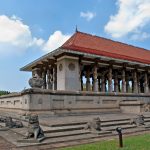
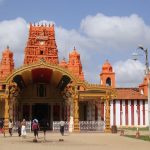
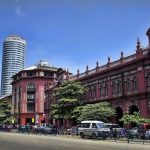
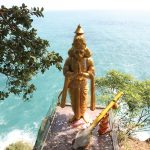
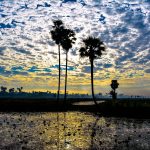
DAY 1: AIRPORT – NEGOMBO
***END OF TOUR***
- On arrival in Sri Lanka, please clear immigration, collect your luggage then proceed through the customs green channel to the arrival lobby. We will be waiting in the designated area with a paging board. You will then be escorted to the vehicle park for your transfer.
- Transfer from Airport to Negombo (Approx: 20Mins)
- Overnight Stay at Hotel in Negombo
- After breakfast proceed to Anuradhapura (Approx 4Hrs)
- Visit Anuradhapura Cultural Sites: Anuradhapura which was the 1st chronicled capital of ancient Ceylon. Sri Lanka’s first capital is situated in the dry zone. It is one of Sri Lanka’s premier ancient cities. Attractions: The sacred Bo Tree, temples, Brazen Place, Samadhi Buddha, Kuttam Pokuna, and Mihintale (12 kilometers from Anuradhap ura) – a rock dotted with shrines and dwellings – a grand stairway of 1,840 steps made of granite slabs that leads to a summit with a splendid view of the countryside. Among the ruins of this once magnificent city, Anuradhapura, is the Ruwanvaliseya Temple, situated in the Mahamega Gardens. Built in the second century B.C by King Dutugamunu… It is 100 metres tall, 77 metres wide, and 300 ft in diameter.
- Overnight Stay at Hotel in Anuradhapura
- After breakfast proceed to Jaffna (Approx: 4.5Hrs)
- Jaffna is the capital city of the Northern Province, Sri Lanka. Most of the residents of Jaffna are Sri Lankan Tamils with a presence of Sri Lankan Moors and Portuguese Burghers.
- Overnight Stay at Hotel in Jaffna
- Breakfast at Hotel
- Visit Following Option Sites in Jaffna
- Jaffna Fort: Spread over an area of 22 hectare within city limits, star shaped Jaffna’s fort was built in 1680 by the Dutch over an earlier Portuguese fort. Architecturally, it’s probably Asia’s best example of Dutch fortifications of its period. There is the King’s House, one-time residence of the Dutch commander, within the fort which is an excellent example of Dutch architecture of the period.
- Jaffna Clock Tower: The main attractive feature of the Clock Tower is its unique architecture, having a Moorish domed top which makes it look like it belongs somewhere in North Africa. The Jaffna Clock Tower is about 130 years old and situated near the old sector of Jaffna Town. This is part of Jaffna’s colonial history under the British rule. In 1875, the son of the thenBritishQueen Victoria, His Highness The Prince of Wales who later became the King with the name Edward VII, visited Sri Lanka…and the clock tower of Jaffna then newly erected.
- Jaffna Delf Island: 35 km from Jaffna, Delft fort was built by Portuguese. It is in Neduntivu islet in the Jaffna peninsula, and is made of huge, beautiful chunks of the brain and fan coral. Ferries, when they run, go from Siriputu… The small Dutch fort is only a short walk from the ferry dock. Behind that is a beautiful beach with many exquisite shells.
- Jaffna Archeological Museum: An interesting little Archaeological Museum situated on Main St, near the old rest house, is worth a visit.
- Jaffna Library: One of most significant attractions in Jaffna city is its library which houses many rare books and articles on Sri Lanka. The library is built in accordance with Hindu architecture. In 1981, it was set on fire by a Singhalese crowd due to the ethnic tensions and refurbished in 2003 by the government of the country
- Jaffna Kandaswamy Kovil: The Kandaswamy Kovil is situated on Point Pedro Rd in the Nallur district of the city. Architecture of the temple is based on the south Indian Dravidian style. The original Kandaswamy Kovil, torn down by the Portuguese, has been variously described as dating before 10th century.
- Jaffna Nallur Temple: The Nallur Temple in Jaffna is a Hindu temple, highly frequented by the Tamils residing in this place. Main deity of the temple is Lord Murugan. A temple car festival is held here every year. Temple opens from 6:00 am to 5:00pm.
- Jaffna Kantadorai (Kadurugoda): Kantarodai (Kadurugoda) is a mini Buddhist Stupa complex, situated in North of Jaffna at Kankesanturai road, about three km west of Chunnakam. At Kantarodai, there are nearly 100 curious miniature dagobas crammed into a tiny area of not much over a hectare – the largest is only about four meters in diameter. It was discovered in 1916 and thought to be over 2000 years old.
- Overnight Stay at Hotel in Jaffna
- After breakfast proceed to Trincomalee (Approx: 4.5Hrs)
- Evening Leisure at the beach resort in Trincomalee
- Overnight Stay at Hotel in Trincomalee
- Breakfast at Hotel
- Enjoy a City Tour of Trincomalee: Trincomalee also known as Gokanna,is the administrative headquarters of the Trincomalee District and major resort port city of Eastern Province, Sri Lanka. Located on the east coast of the island overlooking the Trincomalee Harbour, 113 miles south of Jaffna and 69 miles north of Batticaloa, Trincomalee has been one of the main centres of Sri Lankan Tamil language speaking culture on the island for over two millennia. With a population of 99,135, the city is built on a peninsula of the same name, which divides its inner and outer harbours. People from Trincomalee are known as Trincomalians and the local authority is Trincomalee Urban Council. Trincomalee city is home to the famous Koneswaram temple alluded to in its historic Tamil name Thirukonamalai and is home to other historical monuments such as the Bhadrakali Amman Temple, Trincomalee, the Trincomalee Hindu Cultural Hall and, opened in 1897, the Trincomalee Hindu College. Trincomalee is also the site of the Trincomalee railway station and an ancient ferry service to Jaffna and the south side of the harbour at Muttur.
- Overnight Stay at Hotel in Trincomalee
- After breakfast proceed to Colombo (Approx: 6.5Hrs)
- Optional | Evening Enjoy a City Tour of Colombo: Colombo, the commercial capital of Sri Lanka, is a major port near the mouth of the Kelani Ganga River. It owes its importance largely to its great breakwaters, which give shelter to a large, artificially created harbour. Beira Lake, administratively part of the Port of Colombo, is connected with the harbour by a canal and locks. Colombo handles most of the foreign trade of Sri Lanka and is an important fuelling station. Manufactures of the city include metal goods, refined petroleum, motor vehicles, processed food, textiles, clothing, and chemicals. Sri Jayavardhanapura, the legislative and judicial capital of Sri Lanka, is on the outskirts of Colombo. The business section of Colombo, called the Fort, occupies the sites of the former fortified area. Broad avenues and modern buildings contrast with the narrow, crooked streets and ramshackle structures of the Pettah quarter. Places of worship include Christian churches, Muslim mosques, and Buddhist temples. The University of Colombo, Sri Lanka Technical College (1893), and other educational institutions are located in the city. The early name of the city, Kalan-totta (Kelani ferry), derived from a nearby river-ferry point, was corrupted into Kolambu by the Arabs and changed to Colombo in 1517 by the Portuguese in honour of Christopher Columbus. Proceed to the Hotel Spend rest of the day at leisure
- Overnight Stay at Hotel in Colombo
- After breakfast proceed to Airport for departure (Approx: 1Hr)
